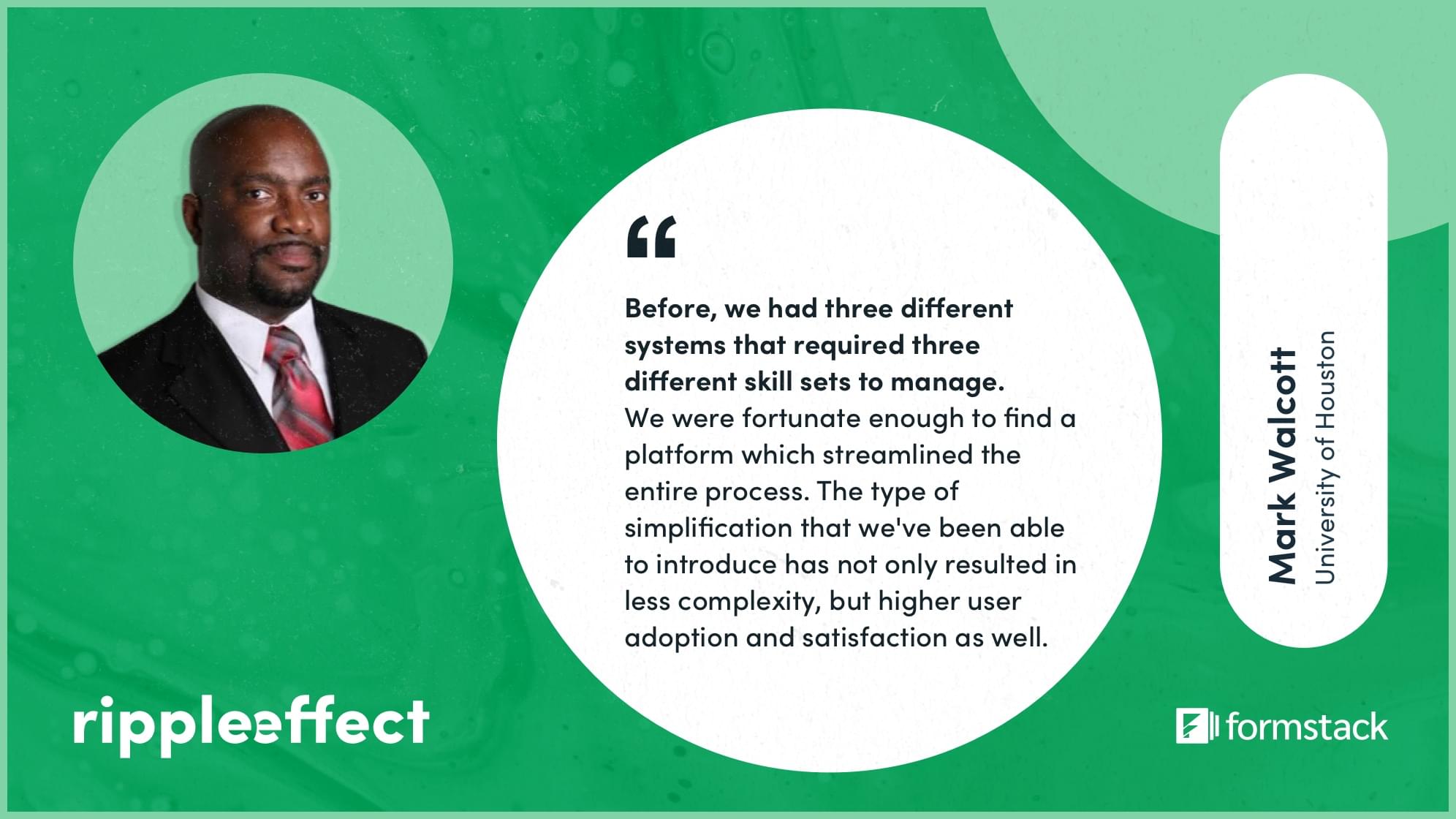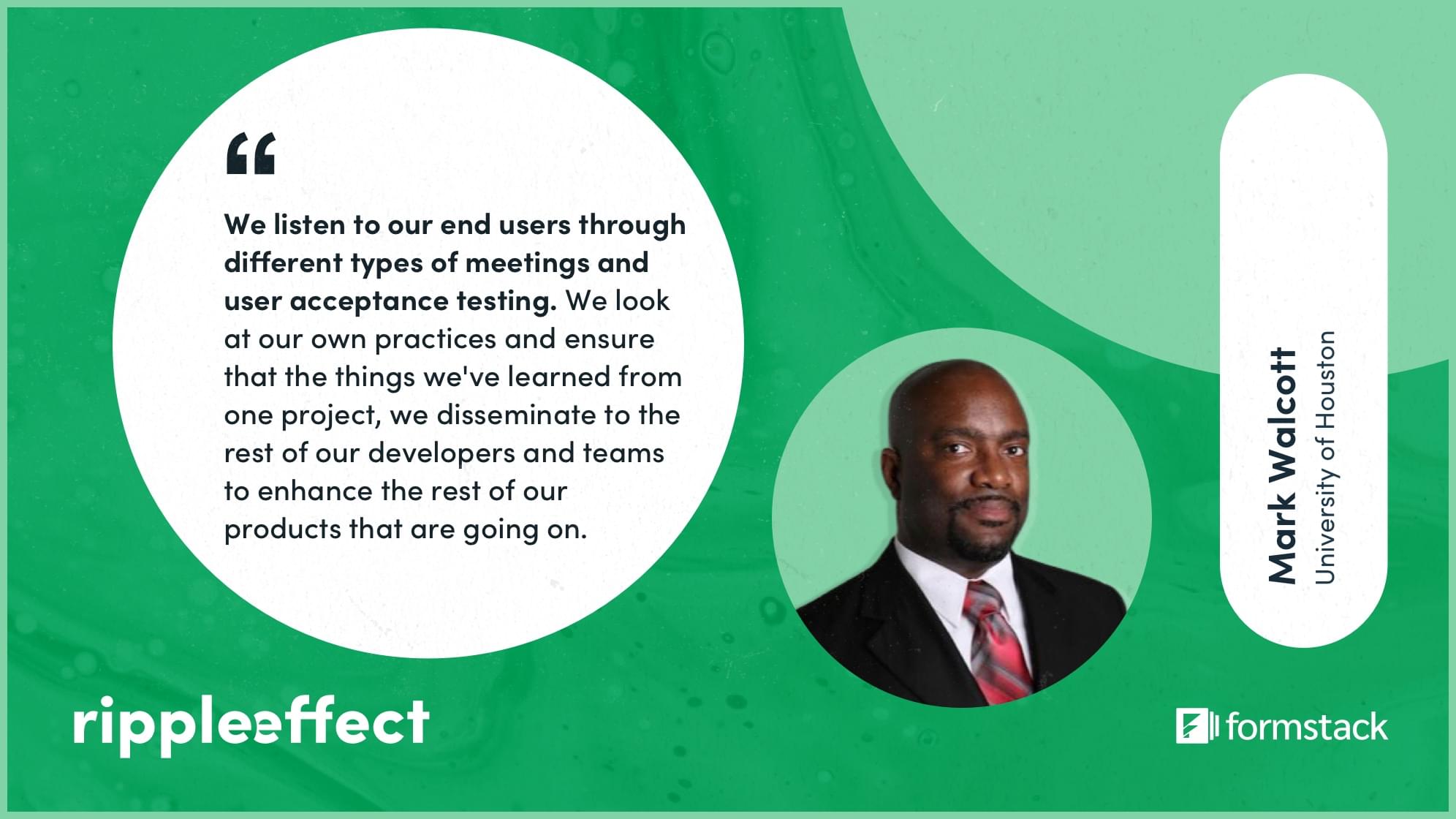What could you accomplish at work if you had one more hour each day?
Getting that hour into your schedule doesn’t have to come from working late or coming in early. You can make more time by simplifying processes and ensuring your day-to-day tasks are running as efficiently as possible.
But how exactly do you figure out which processes can be simplified? What changes can you make to breakdown complicated workflows? And how do you go about making those important changes?
These five questions can help guide you in your mission to simplify business processes so you can become more efficient and productive.
1. Are we using too many systems?
Dividing a process up across multiple different tools and systems can quickly become a stumbling block to efficiency.
There’s a high amount of risk that the process could break. Your data might not transfer at the correct time, or it may transfer incorrectly. A product could make an update that voids your entire process. If something goes wrong, it may take a large investment of time to identify where the problem is stemming from.
On top of the technical difficulties that can arise, you need to keep in mind the investment of people it takes to run a process across multiple tools.

If the tools in your tech stack are fairly technical, you may need multiple people to help run the process. If something breaks, you may not be able to fix it on your own. If you feel like too many tools are used in a process, you may want to begin looking for a solution that can complete the multiple steps of your process within one secure platform.

Did you know? Using no-code tools can help ensure that if something breaks within your process, you’re able to quickly and easily deploy a fix that you can test in real time.
2. Can this be done remotely?
The COVID-19 pandemic has forced many businesses to completely reevaluate how work can be performed. But there are still processes that people think can’t be done remotely, that could.
When evaluating whether something can be done remotely, consider these questions:
- Can paper be eliminated from the process?
- Are there any reasons why this has to be done in person?
- What are the roadblocks keeping you from remote?
- If compliance is an issue, is there compliant technology that can help?
3. Does anyone else know how to do this?
This is an issue that plagues teams across the world. When setting up processes, technology, and workflows, we often don’t consider whether anyone else would be able to run the process without us.
But what if someone is suddenly out sick? What if they retire? They could take a new job and leave without laying out the process in its entirety. That person may be the only one with the specific skills or knowledge to run the process.
This is why it’s important to use products and processes that can be easily explained and run by others. You never want to be stuck in a situation where an important business process cannot be performed because there’s only one person who knows the system.
Related: How Digital Agility Empowers Employees and Boosts Productivity
4. When did we last audit this process?
If it ain’t broke, don’t fix it, right? Not exactly.
A process may seem to be working effectively, but when is the last time you really dug deep into the analytics or steps in the process? If it’s been a while, you may be surprised by what a process audit reveals.
Begin by laying out the entire workflow or steps in your process. This includes identifying the products, people, and time involved. Once you identify these items, you can begin to see more clearly where things can be optimized or condensed.
Look for ways to bring automation into the fold, steps that can be removed, and approvals that may not be necessary. Also look for ways to eliminate manual or paper-based processes to help quicken the process.
5. Are you continually sharing feedback?
If you don’t ask for feedback, you may never know there are issues or inefficiencies with your process. It’s important to ask for feedback, ideas, and thoughts from coworkers to ensure you’re gathering diverse perspectives. Tapping into the knowledge base of your team can help you learn, grow, and better develop future projects and systems.

Make sure you are keeping track of this feedback as you capture it. Who knows how helpful it could be for a project down the road. Consider using a simple survey or feedback form to collect data, then make the data easily accessible to all employees. Knowledge is power, and you can save a lot of time, effort, and headaches by sharing it across your organization.
Start Simplifying Business Processes Now
The tips above can help guide you in figuring out which processes, systems, and workflows need to be reevaluated and possibly reconfigured. Taking the time to ask these questions can help boost creativity and innovation, plus help you find ways to be more productive and efficient every day.
Want even more tips on how to simplify business processes? Listen to our Ripple Effect podcast episode Simplifying Processes in the Digital Age now. Dr. Mark Walcott of the University of Houston explains how he breaks down complicated systems and streamlines everyday processes to be more effective and efficient.











